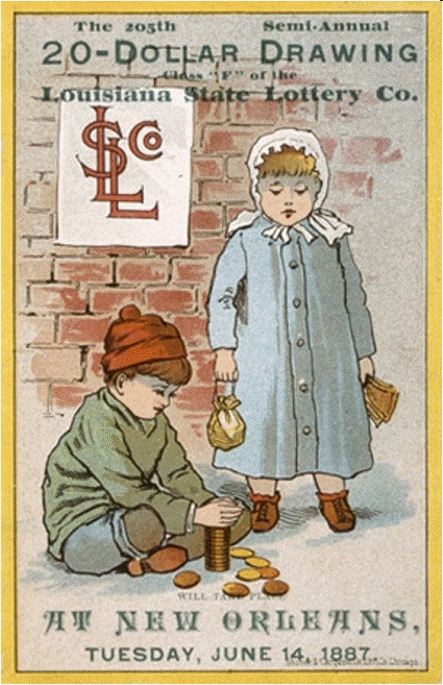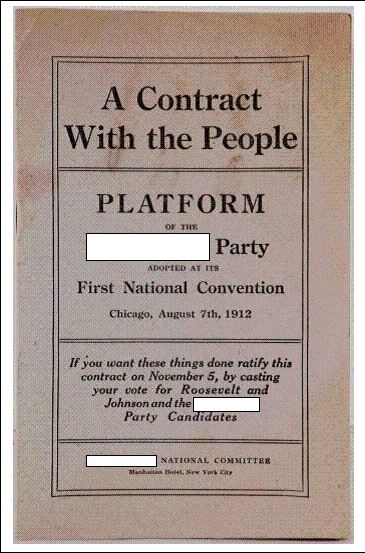Multiple Choice
Identify the
choice that best completes the statement or answers the question.
|
|
|
1.
|
Who was the first Democrat elected governor of
Louisiana after Reconstruction?
a. | E.A. Burke | b. | Francis T. Nicholls | c. | John
McEnery | d. | Newton Blanchard |
|
|
|
2.
|
What Supreme Court case established the
separate-but-equal concept?
a. | Brown v. Board of
Education | b. | Marshall v.
Marbury | c. | Plessy v.
Ferguson | d. | Roe v.
Wade |
|
|
|
3.
|
Why did the state of Louisiana establish the
convict lease system?
a. | to earn money | b. | to help local businesses | c. | to relieve
overcrowded jails | d. | to impose harsh
punishments on criminals |
|
|
|
|
|
|
4.
|
Why does the author reference Jim Crow in the title
of the article?
a. | Jim Crow was the name of the arresting
officer. | b. | Jim Crow refers to an organization of white
supremacists. | c. | Jim Crow was the
name used for train cars designated for African American use. | d. | Jim Crow refers to a set of laws designed to segregate African Americans and
whites. |
|
|
|
5.
|
How did the Supreme Court’s Plessy v.
Ferguson ruling impact southern legislatures?
a. | They were unaffected by the
ruling. | b. | They passed additional segregation
statues. | c. | They were forced to eliminate Jim Crow
laws. | d. | They were forced to integrated public
transportation. |
|
|
|
6.
|
Where did the political term Bourbon
originate?
a. | from the Lottery Company | b. | from the street in New Orleans | c. | from the kings of France between 1814-1830 | d. | from the liquor politicians drank at social
events |
|
|
|
7.
|
What did labeling someone a Bourbon Democrat
imply?
a. | They were corrupt. | b. | They were in favor of prohibition. | c. | Their social life often interfered with their government
work. | d. | They had not accepted the changes brought about by the
Civil War. |
|
|
|
Constitution of
1868 | Constitution of
1879 | Extended civil rights to former
slaves | Limited voting rights of
freedmen | Extended voting rights to black males | Returned Louisiana to home
rule | Removed property qualifications for voting | Moved state capital to Baton
Rouge | Abolished Black Codes | Authorized a lottery | Racially integrated public school system
statewide | State Supreme Court given
supervisory power over inferior courts | Equal treatment on public transportation and at public
businesses for all people | Required amendments to approve large projects | Removed voting rights
from former Confederates | Rolled back educational
reforms | | |
|
|
|
8.
|
How did the Constitution of 1879 differ from the
state’s previous constitution?
a. | It favored an expanded
government. | b. | It was more
focused on racial equality. | c. | It removed voting
rights from freedmen. | d. | It focused on
government structure. |
|
|
|
9.
|
Which two groups suffered when Louisiana replaced
the Constitution of 1868?
a. | businessmen and congressmen | b. | freedmen and students | c. | inferior courts
and freedmen | d. | judges and
lawyers |
|
|
|
10.
|
 Which conclusion can be
drawn about the use of children in this advertisement? Which conclusion can be
drawn about the use of children in this advertisement?a. | Young children were the Louisiana State Lottery
Company’s target consumer. | b. | The Louisiana
State Lottery Company frequently employed children before child labor laws were
passed. | c. | The Louisiana State Lottery Company thought more people
would buy tickets if they were sold by children. | d. | The Louisiana State Lottery Company wanted to remind consumers that their
purchase would benefit others. |
|
|
|
11.
|
What is patronage?
a. | Public officials taking bribes from businesses and
citizens. | b. | Citizens making large cash donations to a political
campaign. | c. | Public officials giving jobs or other help as a reward
for support. | d. | Employees
returning a portion of their paycheck to their employer. |
|
|
|
12.
|
Which best explains the convict lease
system?
a. | leasing prisoners to private
businesses | b. | leasing prison
space to law enforcement agencies | c. | allowing prisoners
to pay a monthly fee for their freedom | d. | state funded
program to help former convicts find suitable living
conditions |
|
|
|
13.
|
Which best describes New Orleans’ Star Car
requirement?
a. | prohibited African Americans from using
streetcars | b. | segregated African
Americans to marked train cars | c. | prohibited African
Americans from traveling by train | d. | segregated African
Americans to marked streetcars |
|
|
|
Use the information to answer the next question(s).  Constitution of
1868 | Constitution of
1879 | Extended civil rights to former
slaves | Limited voting rights of
freedmen | Extended voting rights to black males | Returned Louisiana to home
rule | Removed property qualifications for voting | Moved state capitol to Baton
Rouge | Abolished Black Codes | Authorized a lottery | Racially integrated public school system
statewide | State Supreme Court given
supervisory power over inferior courts | Equal treatment on public transportation and at public
businesses for all people | Required amendments to approve large projects | Removed voting rights
from former Confederates | Rolled back educational reforms | | |
|
|
|
14.
|
On what grounds did the Louisiana Supreme Court
base their 1874 decision?
a. | First-class tickets cost
$1,000. | b. | Decuir was wealthy and had light
skin. | c. | John Benson was not a Louisiana
native. | d. | The Constitution of 1868 guaranteed equal
access. |
|
|
|
15.
|
Which form of transportation was segregated based
on the Separate Car Act?
a. | carriages | c. | streetcars | b. | steamboats | d. | trains |
|
|
|
|
|
|
16.
|
Which viewpoint is expressed in this
cartoon?
a. | Jim Crow laws are fair and
democratic. | b. | Jim Crow laws
provide separation and equality. | c. | Jim Crow laws
provide separation but not equality. | d. | Jim Crow laws
improve the lives of African Americans. |
|
|
|
17.
|
Who would have drawn or published this
cartoon?
a. | White League | b. | Times-Democrat | c. | Committee of
Citizens | d. | Bourbon Democrats |
|
|
|
18.
|
What was the Committee of
Fifty?
a. | A group formed in response to the assassination of Chief
Hennessy. | b. | A group of Italians who assassinated New Orleans Police
Chief Hennessy. | c. | A group of
citizens who served as jurors during the Hennessy murder trials. | d. | A group assassins hired to execute the Italians arrested following
Hennessy’s assassination. |
|
|
|
19.
|
What measures were added to the Constitution of
1898 to further limit the voting rights of African Americans and poor whites?
a. | suffrage for tax paying women and poll
taxes | b. | literacy tests, poll taxes, and property
requirements | c. | segregated polling
locations and property requirements | d. | age limits,
literacy test, and segregated polling locations |
|
|
|
20.
|
What was the grandfather
clause?
a. | It allowed a person to vote only if their grandfather
was present in the voting booth. | b. | It gave a person
the right to vote if they had a grandfather who was alive before 1867. | c. | It gave a person the right to vote if their father or grandfather had been a
voter before 1867. | d. | It allowed a
person to vote if they had voted before the Constitution of 1898 was
adopted. |
|
|
|
21.
|
How did the adoption of a grandfather clause affect
voters in Louisiana?
a. | It increased the number of men who were allowed to
vote. | b. | It decreased the number of women who were allowed to
vote. | c. | It successfully disfranchised the majority of African
American voters. | d. | It provided a
loophole for African Americans who had lived in Louisiana since before 1867.
|
|
|
|
22.
|
How did the system of sharecropping
work?
a. | Planters worked together to raise a greater volume of
cash crops and shared the profits evenly. | b. | Planters were
required to share a portion of their cash crops with the state as a form of property
tax. | c. | Planters sold a portion of their land to a farmer in
exchange for a small, yearly cash payment after the harvest. | d. | Planters would rent a portion of their land to a farmer who promised the
farmer an agreed-upon portion of the crop. |
|
|
|
23.
|
Cause | | Effect | Louisiana's 1886 sugar crop is poor. |

| Planters lower workers' pay. | | | | | Workers in sugar
parishes unionize. |

| Unionized workers strike for better pay and working
conditions. | | | | | Union members meet in Thibodeaux. |

| Planters hire gunmen to protect their lands and
interests. | | | | | |

| Workers' strike and attempts to
unionize end. | | | |
Which event
completes the chart?a. | Unemployed workers are arrested for
vagrancy. | b. | Planters successfully sue workers for breech of
contract. | c. | Gunmen and union workers clash in Thibodeaux leaving 30
dead and over 100 wounded. | d. | Union members and
planters meet in Thibodeaux to discuss wages and working
conditions. |
|
|
|
24.
|
What is a labor union?
a. | contract between employer and
employee | b. | organized group advocating for employees’
rights | c. | term of service agreement between producer and
consumer | d. | organization that organizes job interviews with
potential employers |
|
|
|
25.
|
 The pamphlet represents
the platform of which political party? The pamphlet represents
the platform of which political party?a. | Democratic | c. | Progressive | b. | Liberal | d. | Republican |
|
|
|
26.
|
What is suffrage?
a. | child labor laws | b. | civil rights | c. | right to
vote | d. | segregation |
|
|
|
27.
|
Which Amendment gave women the right to vote in
1920?
a. | Sixteenth | c. | Eighteenth | b. | Seventeenth | d. | Nineteenth |
|
|
|
28.
|
What is scrip?
a. | a bartering system | b. | a tax paid to employers | c. | a substitute for
legal currency | d. | a fee paid when
cashing checks |
|
|
|
29.
|
Why did lumber workers rely on credit to purchase
goods?
a. | Lumbering jobs did not pay well and were
dangerous. | b. | Lumber companies
could not afford to pay them in cash. | c. | All Louisiana
lumber companies paid their workers in scrip. | d. | Remote camp
locations allowed stores to charge higher prices. |
|
|
|
30.
|
Which was an unexpected opportunity benefit from
oil exploration?
a. | low paying job creation | b. | discovery of natural gas | c. | increased state
revenues | d. | arrival of new
businesses |
|